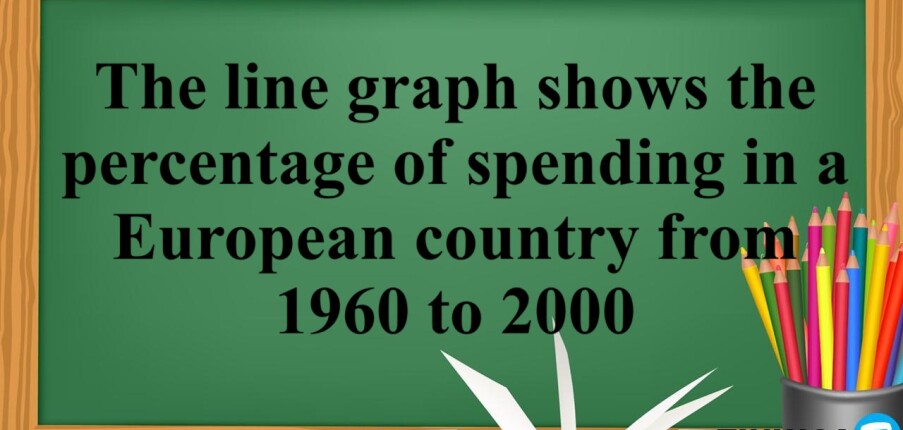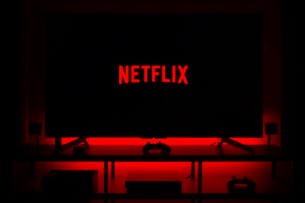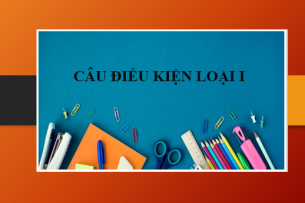The line graph shows the percentage of spending in a European country from 1960 to 2000 | Bài mẫu IELTS Writing Task 1
Phân tích bài viết
- Dạng bài: Biểu đồ đường, có sự tăng giảm
- Đối tượng phân tích: tỉ lệ chi tiêu của một quốc gia Châu Âu
- Thì: tất cả các mốc thời gian đều nằm trong quá khứ đơn nên bài viết sẽ sử dụng thì quá khứ đơn.
Cấu trúc bài viết
Mở bài: Paraphrase lại đề bài.
Tổng quan: Đưa ra những xu hướng tăng giảm của các nhóm số liệu. Nêu ra nhóm chi tiêu có tỉ lệ cao vượt trội.
- Câu thứ nhất: Phần trăm chi tiêu cho tất cả các thành phần đều giảm trừ chi tiêu cho quần áo
- Câu thứ hai: Chi tiêu cho lương thực chứng kiến mức sụt giảm mạnh nhất
Đoạn thân bài 1: So sánh số liệu của food và leisure
1. Food có phần trăm chi tiêu cao nhất, theo sau bởi leisure
2. Cả hai đều giảm sau 40 năm nhưng số liệu của food giảm gấp đôi còn leisure giảm nhẹ
Đoạn thân bài 2: So sánh số liệu của clothing và transport; nêu ra số liệu của Energy
1. Clothing và transport có cùng mức khởi điểm vào năm 1960
2. Sau 40 năm, chi tiêu cho clothing tăng còn transport giảm
3. Chi tiêu cho energy giảm xuống gần bằng không
Bài mẫu tham khảo
Bài mẫu band 5.5+
The line graph displays how people in a particular European country expended money on various commodities spanning 40 years from 1960 to 2000.
A glance at the graph shows that food was the most consumable for the majority of the time in question whilst fuel/energy consumption was the lowest. Another interesting point is that residents in this country were more likely to spend more on transportation over time.
In 1960, food spending hit its peak of just under 35%, which was nearly double that of leisure (just below 20%) and far exceeded the figures for other aspects namely clothing (10%), transport (9%) and fuel/energy (6%). This dominance was challenged 40 years later by transport as the figure enjoyed a steady upswing to reach a high of 15% in 2000. Expenditure on food, however, recorded a precipitous decline, accounting for less than 14% at the end of the period.
With regards to non-necessities, spending on leisure activities, clothing as well as fuel/energy consumption all went down consistently to their lowest points, amounting to just over 10%, 5% and approximately 3% in turn in 2000.
Bài mẫu band 6.0+
The line graph compares how the population of a European country spent their money from 1960 to 2000. Overall, spending on all categories except clothing felt throughout this time, and total expenditure of food experienced the most dramatic decrease.
In 1960, nearly 35% of national budget went on food, compared to 20% of leisure, 10% of clothing as well as transport, and only 5% of fuel/energy. However, over the following 30 years, spending on transport suddenly witnessed a remarkable surge, whereas that of the other four categories represented a downward trend.
By 2000, clothing took over food to become the leader in total population expenditure at around 18%. By contrast, the proportion of money spent on food dropped to just under 15%, compared to 9% of leisure and clothing. spending on fuel and energy still remained unchanged in the last plate with only 2% of national budget.
Bài mẫu band 7.0+
The line chart illustrates how the population of a European country spent their money on food, leisure, clothing, transport, and energy from 1960 to 2000.
Overall, it can be seen that expenditure on all aspects except clothing declined over the period. In addition, while energy was the lowest expense for people, food was generally the highest.
In 1960, food made up just over 30% of expenditure in this country, which was the highest figure for that year, followed by spending on leisure at 20%. However, toward the end of the period, expenditure on food became less and less, and had more than halved by the year 2000, dropping to under 15%. Spending on leisure also declined over the period to around 12% by 2000.
Spending on transport and energy saw similar trends, both steadily declining over the measured period from 10% and 5% respectively, to around 5% and 1%. The only expenditure that increased over the period was that of clothing, which rose from around 9% to 15% over the 40 years period.
Vocabulary
- Expenditure: chi tiêu
- Expenses: chi phí
- Halved giảm: một nửa
Bài mẫu band 7.5+
The chart shows six different spending categories in a European country from 1960 to 2000.
Overall, it can be seen that there was a downward trend among four types of spending (food, leisure, clothing and fuel/energy). The transport category was the only figure that increased steadily over the years.
To begin, in 1960, food was the highest proportion among all the categories, standing at approximately 34%. The figures fell around half over the period of time, at 15%. Similarly, there was a steady decrease in the figures for leisure and clothing, starting at 20% and 10% respectively and falling at its lowest point at the end of the year, 10% and 5% respectively. Fuel/energy consumption remained the lowest proportion throughout the years which experienced a slight downfall, from over 5% to almost 3%.
In regard to the remaining expenditure category, transport experienced a gradual growth over the 40-year period. At the beginning of the year, the proportion stood at nearly 10% and reached its peak at nearly 15% in the year 2000.
Bài mẫu band 8.0+
The line graph illustrates the proportion of money spent on five distinct categories of goods and services in a European country over a forty-year period, commencing in 1960. Overall, it is evident that a downward trend could be seen in all areas of spending except for transportation expenses, which experienced the opposite pattern. While the expenditure on food was the leading sector for almost the entire period, it was substituted by transport spending in 2000.
In 1960, ranked in first place was food, with over a third of the expenditure being allocated, approximately double the figure for leisure activities. Far below was clothing and transport, as their figures similarly stood at 10%. At the bottom of the list, only a minority of expenses were dedicated to the energy categories.
Thereafter, a significant growth of 15% was recorded in the proportion of spending on transport in 2000, surpassing food to establish it as the top spending category. In contrast, the country registered a plunge in the proportion of spending on food, with its figure decreasing sharply to just under 15%. The figures for leisure and clothing followed a similar pattern but less pronounced, spanning from 20% to 10%. Eventually, the percentage of expenses on energy then dropped sharply over the next four decades, hitting an all-time low of merely 1% at the end of the period.
Xem thêm các tài liệu Tiếng Anh hay, chi tiết khác:
TOP Việc làm "HOT" dành cho sinh viên:



